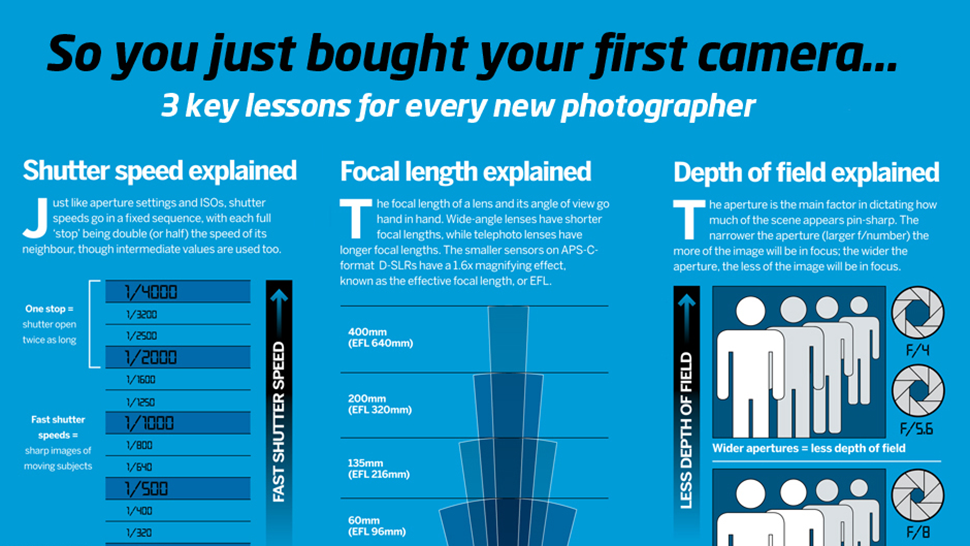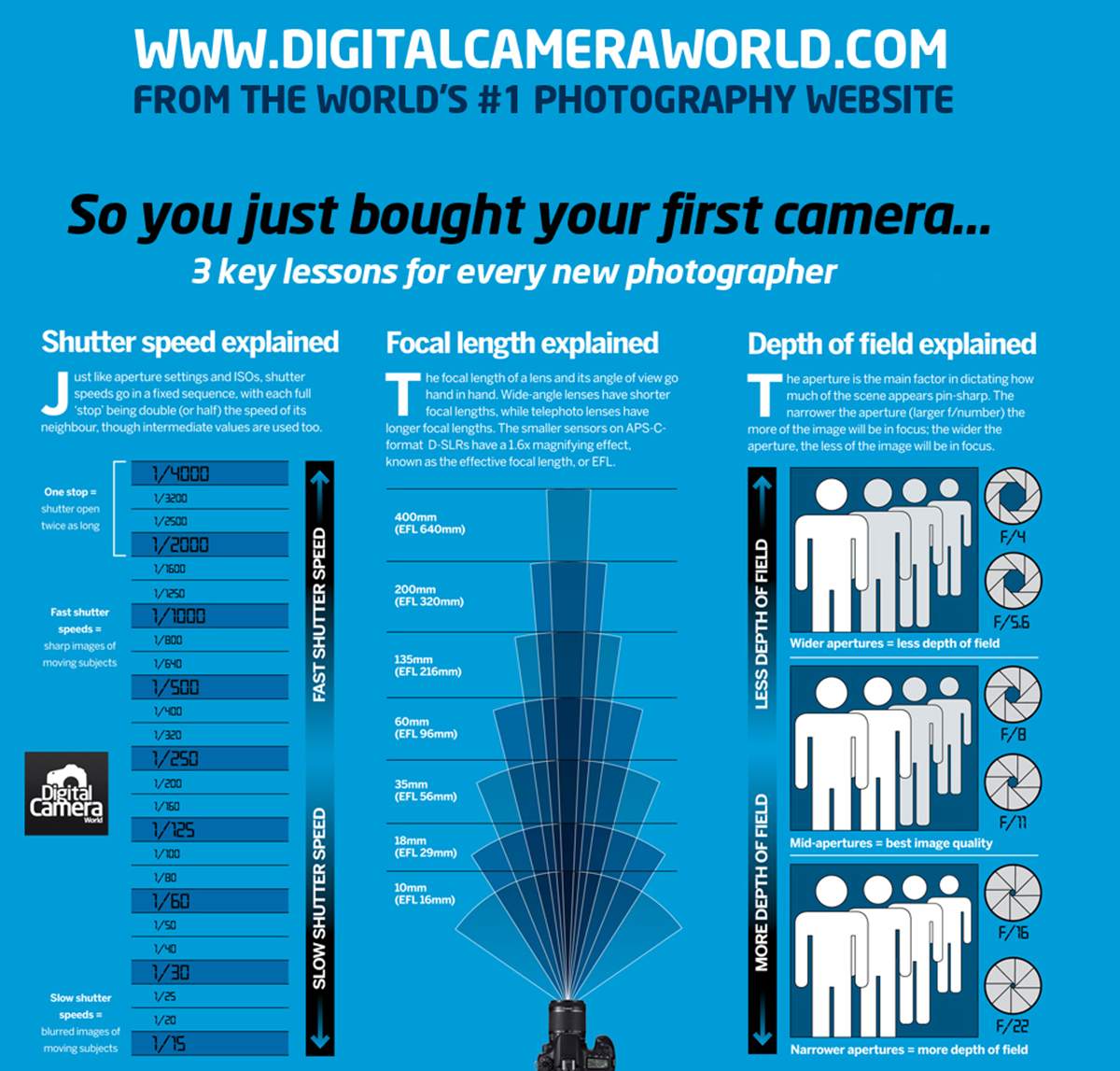Cheat sheet: Three key lessons for every new photographer
New to photography? Here are three things everyone should understand as they're getting started.

Just bought a camera for the first time? Congratulations! You’re probably keen on getting started, and interested to learn as much as you can so you can take great pictures.
There’s no shortage of information out there on how to use your camera, but to save you feeling overwhelmed we’ve pulled together the three essential things to learn and popped them into a handy cheat sheet.
Whether you save it, Pin it, or print it out and stick it to your fridge door, make sure you can access it easily so that you’re never lost!
The first thing to get acquainted with is shutter speed. This is the figure on your LCD screen and/or in the viewfinder that lets you know how long the shutter will be open while the image is being taken.
This is important, as you need to use the right shutter speed to make sure fast-moving subjects are rendered sharply, or to have a nice pleasing blur to them when you use a tripod.
Read more: Cheat sheet: How to understand ISO settings
The next thing to get your head around is focal length. Shorter focal lengths correspond with wide angles, so they’re great for landscapes, interiors and anything else where you need to get a lot of the scene into the frame.
Longer focal lengths, meanwhile, are typically used to home in on more distant subjects, perhaps to isolate them from their backgrounds.
These kinds of lenses are essential for the likes of wildlife and sports photographers, or anyone else that needs to keep their distance from a subject.
Depth of field completes the triplet, and the main way in which photographers control this is by adjusting the aperture.
Some images suit a narrow depth of field so you can pick out a subject and emphasise its importance over everything else. Others require all the details throughout the frame to be equally focused. Knowing how to switch between the two will elevate your photography to the next level.
Read more: Digital Camera World's best photography cheat sheets

Get the Digital Camera World Newsletter
The best camera deals, reviews, product advice, and unmissable photography news, direct to your inbox!
The former editor of Digital Camera World, "Matt G" has spent the bulk of his career working in or reporting on the photographic industry. For two and a half years he worked in the trade side of the business with Jessops and Wex, serving as content marketing manager for the latter.
Switching streams he also spent five years as a journalist, where he served as technical writer and technical editor for What Digital Camera before joining DCW, taking on assignments as a freelance writer and photographer in his own right. He currently works for SmartFrame, a specialist in image-streaming technology and protection.

